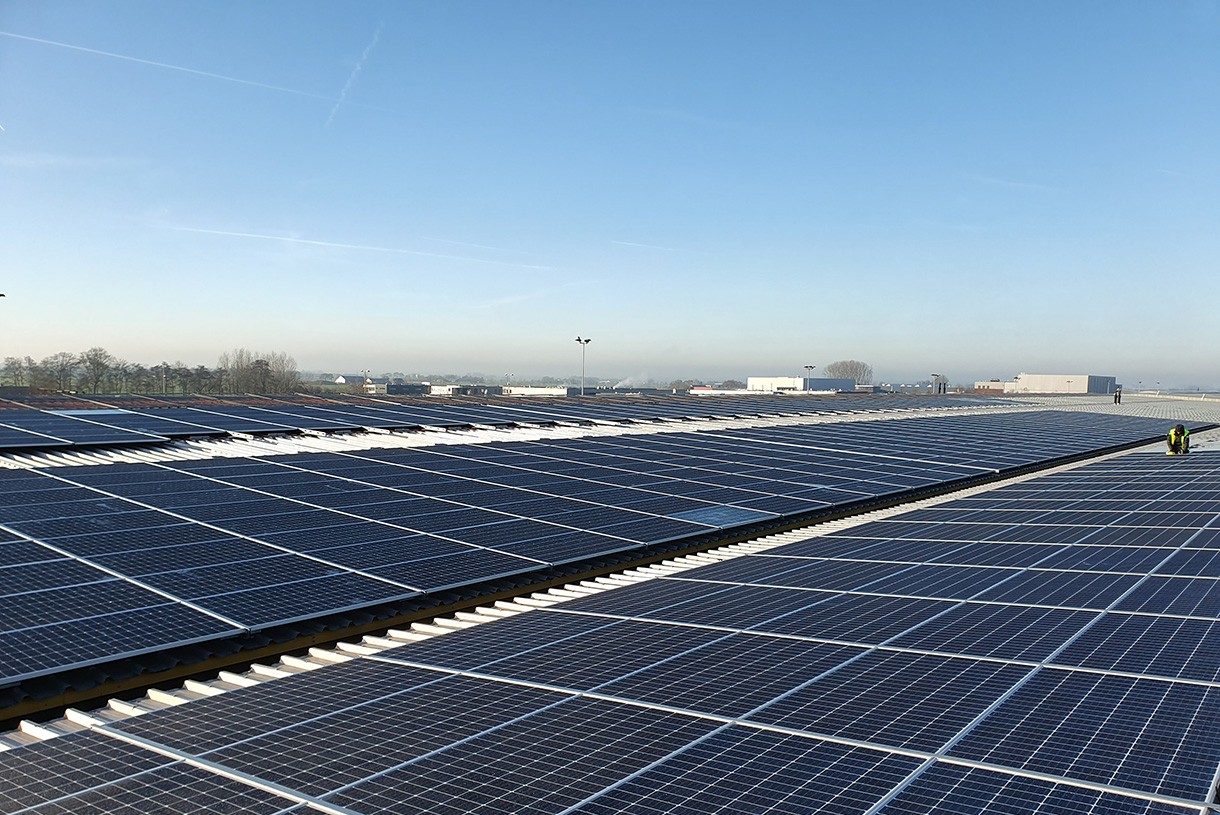Bunschoten uses photovoltaics to avoid CO2 emissions
voestalpine Automotive Components in Bunschoten, the Netherlands, has headed to the rooftops to reduce its CO2 emissions. Construction elements and solar panels were installed on the roofs during winter 2019/20; the company’s photovoltaic (PV) power plant now helps to reduce the amount of electricity it purchases, as well as lowering greenhouse gas emissions.
At a new level
PV systems are also installed at other voestalpine locations, but the facilities at Bunschoten are of a totally different dimension: 35,000 solar panels cover almost all the available roof space at the site. They generate almost a third of the electricity consumed by this Metal Forming Division company each year, and in doing so save around 5,700 tons of CO2 emissions. Of the 10-million-kilowatt hours of annual peak power, the electricity which is not consumed at the site—on Sundays and public holidays, for example — is fed into the public grid. This also helps to make the project implementation cost neutral. The project partner Rooftop Energie is tapping into a long-standing system of public subsidies to install and operate the system.
FastSlide in operation
Sister company voestalpine Sadef is supplying the FastSlide special profiles used to mount the PV system to the roofs. Around 40 km of these optimized profiles were processed and installed parallel to the roof. They require fewer roof fixings, making installation three times faster compared to conventional systems. voestalpine Automotive Components Bunschoten has set a true sustainability benchmark with this project.

